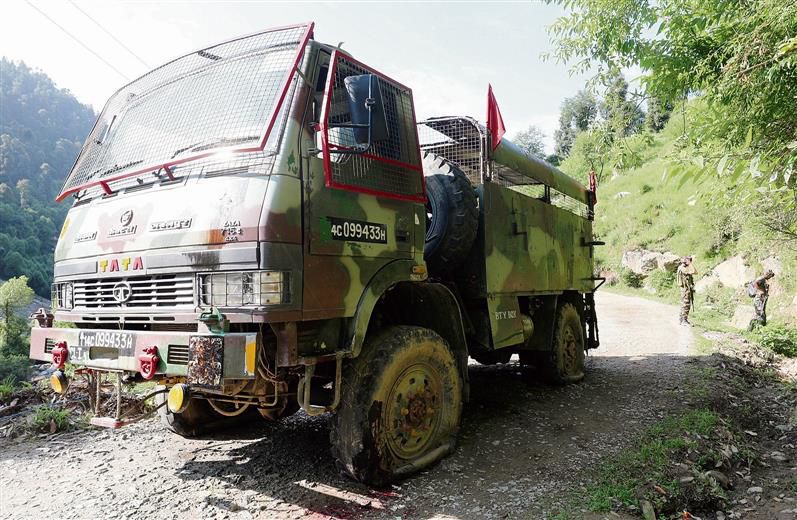Reduced troop strength, rough forest terrain behind rise in militancy in Jammu
Adil Akhzer
Srinagar, July 10
As militancy wanes in Kashmir, the locus of terrorism has now shifted to the three regions of Jammu, which have witnessed a sharp rise in the number of terror attacks in the past few weeks. From the mountains of Poonch and Rajouri, militant footprints have now spread to the Chenab region and the plains of Kathua bordering Punjab.
Behind this shift — from the urban locales of Kashmir to the dense forests of Jammu — are several reasons, including the “advantage” taken by militant groups due to the transfer of troops from Jammu to the Line of Actual Control (LAC) in Ladakh, say experts.
Security agencies had shifted their entire focus to the Valley after the 2003 Hilkaka operations in the Pir Panjal, that had brought peace in Jammu, said an expert. Later, as the LAC witnessed rise in military activity between India and China, troops were again shifted from Jammu to Ladakh. This reduced the presence of troops in Jammu.
“There was a thinning of troops from Jammu as we moved them to the LAC. Terrorists have taken advantage of it and pushed more Pakistanis into Jammu,” Lt General (retd) Deepinder Singh Hooda, former GOC-in-C, Northern Command, said.
Singh added that the militants had started looking for new places to activate their network. “While pressure remains in Kashmir, things are slowly getting better there. The elections have been held peacefully and people turned out for voting in fairly large numbers. So now, their attempt is to put pressure on Jammu,” he said.
A senior counter-insurgency official said the mountains of Jammu provided a “suitable” place for the jungle warfare that the militants have bettered themselves in, especially after the abrogation of the special status of J&K.
“The militants experimented with this high altitude warfare in Poonch. After they were successful in causing heavy damage to the security forces and themselves being relatively safe, they replicated it in other places of Jammu,” the officer said.
Differentiating between militancy in Jammu and in Kashmir, the officer said the rough terrain of Jammu and a denser forest cover provides safe shelter to militants here, as compared to the Valley.
“In Jammu, they have the upper hand, they attack and flee into the dense forests. Whereas in Kashmir, there are a number of connected roads, in Jammu, we have approach roads in the mountain areas, which are at several places not in a good condition,” he added.
“Another advantage is that a militant can sit on the top of a mountain and follow the vehicle. Then, there is a possibility that he may be getting food via drones from across the border if he is hiding near the fence,” the officer said.
While in the Valley, the militants are nestled in urban areas, the isolated population in the mountains makes the flow of human intelligence difficult in Jammu, he added.
Even as the Army rejects heavy infiltration from across the border in Jammu, officials believe that several groups have successfully crossed into this side of the LoC in recent months. “New groups have apparently infiltrated because we don’t have reports of any local joining from Jammu,” said another senior official.
“The attacks and gunfights across Jammu indicate that multiple groups are operating simultaneously,” he added. The security forces, on the other hand, believe that the trend of militancy in Kashmir has shifted from the underground to the hybrid mode and the massive action by the security forces on the “terror network” in the Valley has resulted in ultras shifting the battleground to Jammu.
“The number of locals joining militancy in the Valley has come down. The number for this year so far has been only in single digits. Almost 80 per cent of the attacks in the Valley have been carried out by hybrid terrorists,” said a police officer. Experts say that there is a need to relook the strategy for Jammu. “Additional forces, greater intelligence network, deeper connect with locals…these are some of the areas where focus is needed,” said Hooda.









